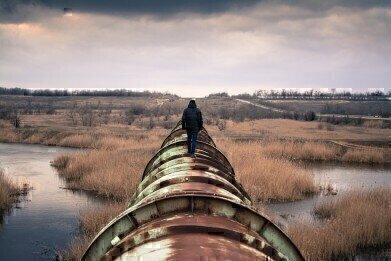Waste Management
Why Should We Be Concerned About Tiny Spillages from the Dakota Access Pipeline?
Jun 14 2017
Tribal chiefs across North Dakota added extra fuel to their arguments last month, after the Dakota Access pipeline sprung its third leak of the year – despite not even being operational yet.
Supporters of the pipeline argue that all of the leaks were very small and had minimal impact on the surrounding environment, but the chiefs (who have been fighting the pipeline’s construction in federal courts for some time) are concerned that the spillages are just a sign of bigger things to come.
Three spills in 2017 alone
Almost two hundred gallons (over 900 litres) of oil has been spilled by the Dakota Access pipeline before it has even become operational. “We have always said it is not a matter of if, but when,” said Jan Hasselman, who acts as a lawyer for the tribal chiefs. “Pipelines spill and leak. It’s just a fact.”
The first leak took place on the 3rd of March, when a mechanical blunder at the Watford City terminal in North Dakota led to the spillage of 84 gallons (320 litres) of oil. A second followed just two days after in Mercer County in the same state, when a manufacturing problem caused 20 gallons (75 litres) of oil to be spilled. The third spillage was recorded on the 4th of April in South Dakota, when a further 84 gallons were lost at a pumping station.
Authorities were quick to point out that all contamination was quickly controlled before it could jeopardise the surrounding environment and that these spills paled in comparison to those experienced in the past.
North Dakota’s leaky track record
The state is certainly no stranger to dealing with oils in contaminated water. In the period between 2006 and 2014, North Dakota experienced in excess of 1,300 spills in total, according to the New York Times. Indeed, 700 of these have occurred in the last year alone.
One of the biggest took place last December in Billings County, when a defect with the Belle Fourche Pipeline caused over half a million gallons (over two million litres) oil to contaminate soil and waterways as far as 7km from the point at which the leak was sprung. Most concerning of all was the negligence of the company responsible, who weren’t even aware of the problem until a member of the public informed them five days after the event.
Another sizable leak happened in Bowman County in December, when 16,800 gallons (63,595 litres) of oil contaminated a ground radius of 100m.
The bigger picture
The leaks sustained by the Dakota Access pipeline this year may well be insignificant in the grand scheme of things, especially since they were relatively small and immediately brought under control. However, they highlight a bigger problem with pipelines in particular and oil as a fuel source in general.
If three spillages can happen when the pipeline has not even begun operations, it’s surely only a matter of time before a larger, more environmentally devastating accident takes place. And that’s not even counting the extensive air quality implications that all pipelines involve.
For their part, the tribes of North Dakota (including the Cheyenne River, Oglala Sioux, Standing Rock and Yankton chiefs) have not given up hope that the pipeline will be decommissioned before it has even started operations. But with its completion date looming ever nearer, and Donald Trump at the helm of the White House, it’s looking increasingly like they are fighting a losing battle.
Events
May 05 2024 Seville, Spain
May 13 2024 Munich, Germany
May 23 2024 Beijing, China
May 23 2024 Beijing, China
Jun 10 2024 Algiers, Algeria













